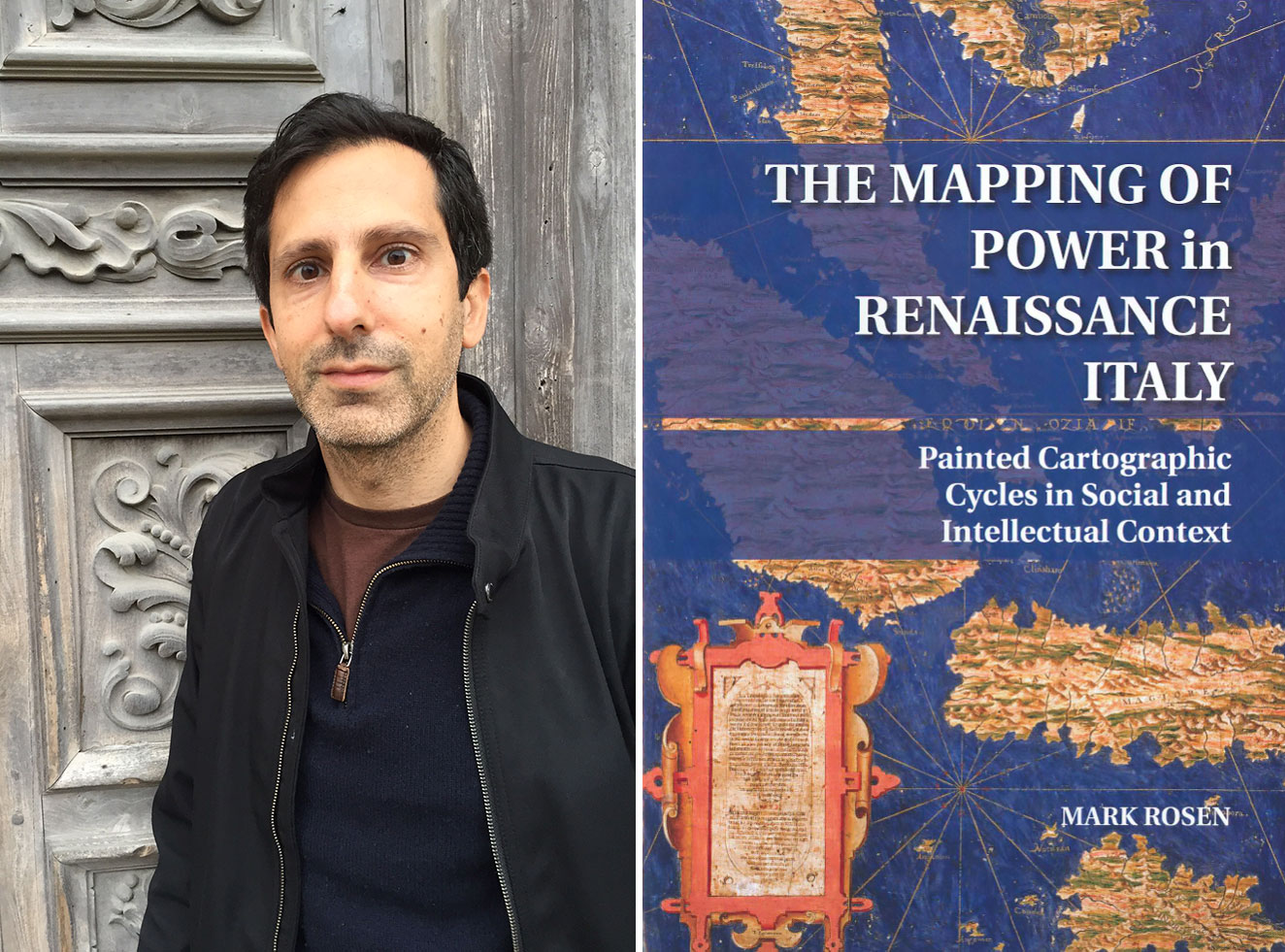
Dr. Mark Rosen, assistant professor of aesthetic studies in the School of Arts and Humanities, was awarded the Sixteenth Century Society and Conference’s inaugural Founders’ Prize for his book The Mapping of Power in Renaissance Italy.
How do you draw a map of the unknown?
In his new book, Dr. Mark Rosen, assistant professor of aesthetic studies at UT Dallas and a member of the Edith O’Donnell Institute of Art History, sets out to show how Renaissance mapmakers communicated effectively when exploration of distant reaches of the world was ongoing and knowledge about certain territories remained incomplete.
Published this month by Cambridge University Press, The Mapping of Power in Renaissance Italy bridges the disciplines of art history and the histories of science, cartography and geography to look closely at surviving Italian painted maps. Just before its publication, the book was awarded the Sixteenth Century Society and Conference’s inaugural Founders’ Prize for best first book manuscript in early modern studies.
Challenging the use of maps as strictly neutral or technical markers of geographic progress, Rosen’s well-illustrated study investigates the symbolic and propagandistic dimensions of these painted maps as products of the competitive and ambitious European court culture that made them.
“Books about maps frequently emphasize progress — how a map was more accurate than its predecessors, improving upon what was previously known. The majority of important maps were made as prints and frequently updated with slight changes or additions,” Rosen said.
“Mark Rosen’s manuscript struck us as the most original, most thoughtfully grounded in theory, best researched and most beautifully written.”
The Sixteenth Century Society and Conference Prize Committee
“Yet in the Renaissance, many rulers chose to paint cycles of monumental maps covering vast halls and galleries — works that very soon looked antiquated. Few of these survive today, but they are among the most fascinating and understudied projects in Renaissance culture: Maps that initially were meant to show the knowledge and taste of their patrons soon revealed how limited their understanding was.”
The Sixteenth Century Society and Conference Prize Committee praised the book in bestowing its award.
“Mark Rosen’s manuscript struck us as the most original, most thoughtfully grounded in theory, best researched and most beautifully written,” the committee said.
“I’m thrilled to have won the award and to have had the support throughout the School of Arts and Humanities,” Rosen said.
Rosen has also published articles and reviews in a number of international art-historical and historical journals, including The Art Bulletin, Renaissance Quarterly, The Sixteenth Century Journal, Mitteilungen des Kunsthistorischen Institutes in Florenz, Oud Holland, Archives Internationales d'Histoire des Sciences, Nuncius and CAA Reviews. His next major publication, coming in The Art Bulletin in March, focuses on 17th-century European monuments depicting slaves.
Rosen, who lived in Florence, Italy, for several years, regularly offers courses covering European art between the years 1200 and 1700, from the late medieval period through the Baroque. In the spring semester, he is teaching a topics course on Leonardo da Vinci and a graduate course on narration in early modern art.